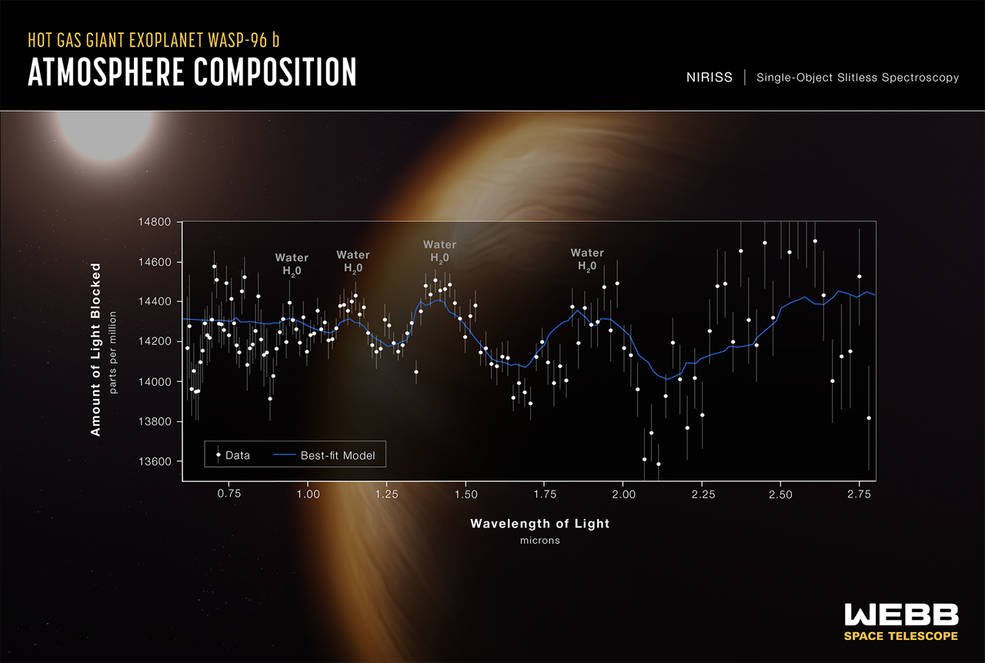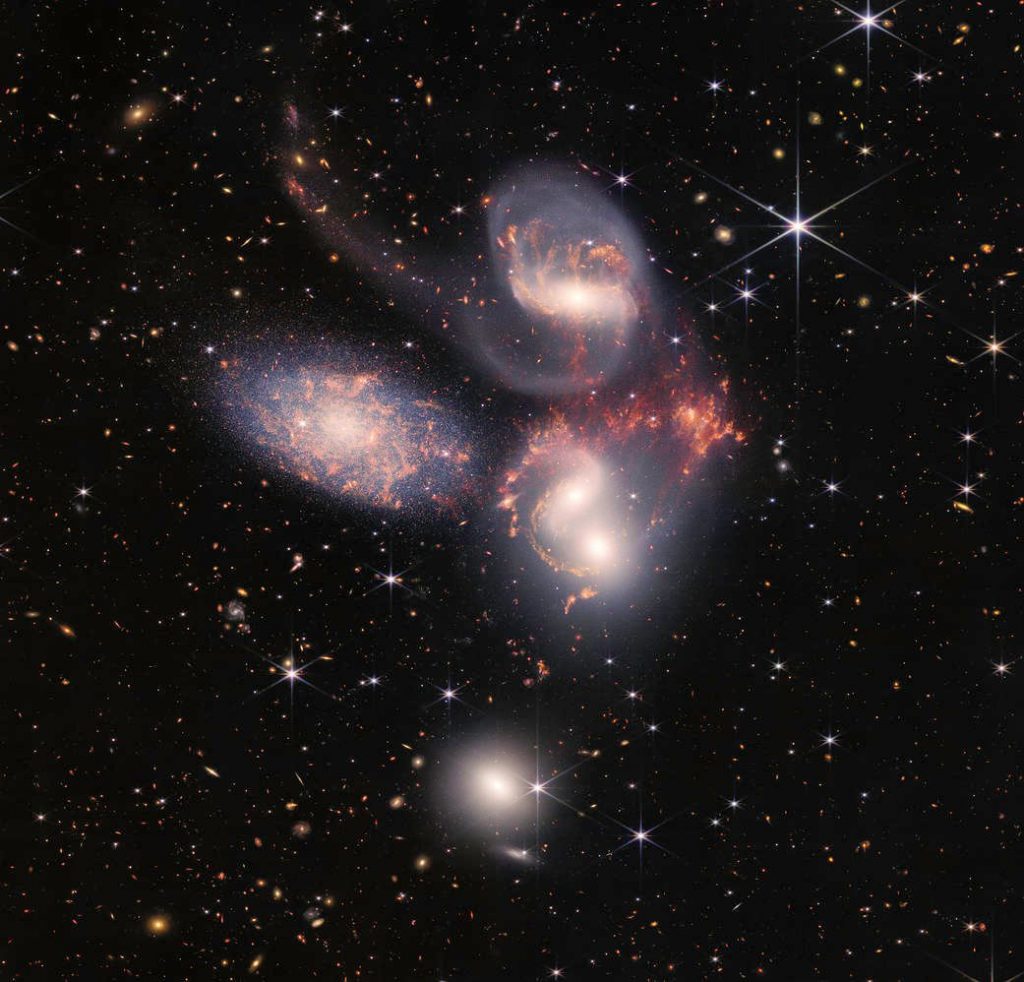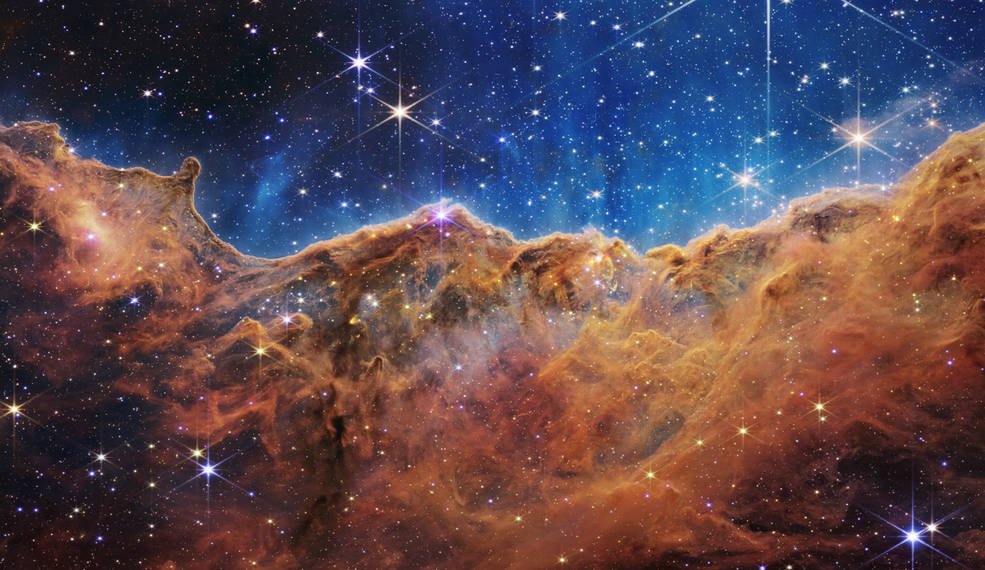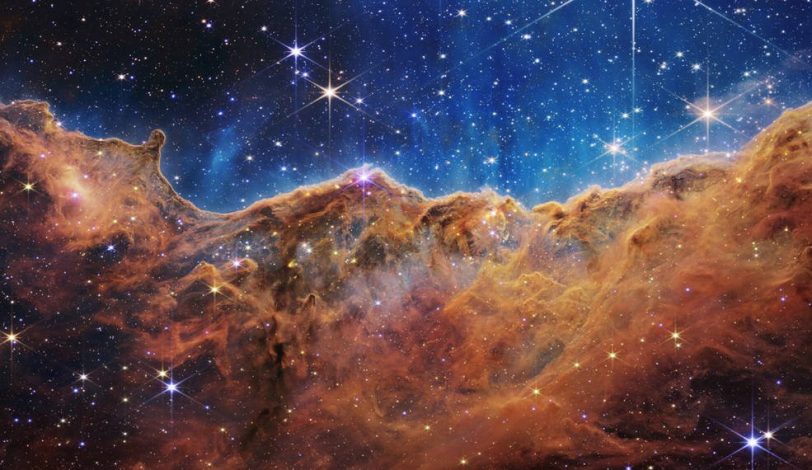The James Webb Space Telescope (JWST) has already pushed humanity’s vision deeper into time and space than ever before, providing a breathtaking preview of the deepest and sharpest infrared image of the early Universe to date.
Now, NASA has just unveiled five more stunning full-color images captured by the most ambitious telescopes humanity has ever built.
“You ain’t seen nothing yet,” Gregory L. Robinson, James Webb Space Telescope Program Director, teased in the lead-up to the reveal.
Feast your eyes on these incredible visions, which are clearer and more detailed than anything we’ve ever seen.
If you aren’t already blown away, consider that this is only five days’ worth of images!! It is the result of decades of hard work by many people all over the world, and it is only the beginning.
The Southern Ring Nebula
What you see here are spectacular death waves from the Southern Ring Nebula – shells of gas shuddered off dying stars.
The Southern Ring Nebula, also known as NGC 3132, is a beautiful, glowing blob in the southern constellation of Vela located approximately 2,500 light-years away.
It has two stars in the center. The fainter one is a white dwarf, which is the collapsed core of a dead star that once had up to eight times the mass of the Sun. It died, blew off its outer layers, and the core collapsed into an ultradense object: up to 1.4 times the mass of the Sun packed into an object the size of Earth. Although it still shines, it is only due to residual heat. It will cool to a dark, dead object over billions of years.
JWST has revealed for the first time that this star is shrouded in dust. The brighter star is further along in its evolution and will eventually explode into its own nebula.

“Webb will allow astronomers to dig into many more specifics about planetary nebulae like this one,” explains NASA. “Understanding which molecules are present, and where they lie throughout the shells of gas and dust will help researchers refine their knowledge of these objects.”
Read more about the image of the Southern Ring Nebula.
The Deep Field Image

We’ve already seen SMACS 0723’s deep field image, which is packed with galaxies frozen in time billions of years ago. Today, the Webb team revealed more information about the image.
Read more about the Deep Field image.
Exoplanet WASP-96b
WASP-96b, a hot puffy world so close to its star that its orbit is only 3.5 Earth days, was one of JWST’s targets. It’s whirling around 1,150 light-years away, around a Sun-like star.
WASP-96b has a mass less than half that of Jupiter and a diameter 1.2 times that of Jupiter, making it much puffier than any gas giant in our Solar System – and much hotter, with a temperature of more than 1,000 degrees Fahrenheit (538 degrees Celsius).
What’s fascinating is that JWST has been able to detect evidence of clouds and haze in the exoplanet’s atmosphere, capturing “the distinct signature of water”.

JWST was able to reveal the presence of specific gas molecules around the planet by observing tiny decreases in the brightness of specific colors of light over a 6.4-hour period on June 21. This is the most detailed analysis of an exoplanet’s atmosphere that we’ve ever received.
How does it work? When an exoplanet passes between us and its host star, a small, very small amount of the star’s light should pass through the star’s atmosphere, if it has one. Scientists can examine the spectrum of that light to look for brighter or dimmer wavelengths from light absorbed and re-emitted by atmospheric elements. This can help us figure out what those elements are.
What’s interesting is that previous observations suggested WASP-96b had a cloudless atmosphere. So we still have a lot to learn about this strange exoplanet.
The Hubble Space Telescope detected water in an exoplanet’s atmosphere in 2013, but Webb’s detection is faster and far more detailed, and only hints at the potential of what lies ahead for our understanding of alien worlds.
Read more about the WASP-96b observations.
Stephan’s Quintet
Stephan’s Quintet is a group of galaxies locked in a cosmic dance of collisions and the birth of new stars (the red areas in the image below).
The new JWST image of Stephan’s Quintet is enormous, covering one-fifth of the Moon’s diameter (as seen from Earth) and containing over 150 million pixels. It was created using approximately 1,000 image files and helps in understanding how these dramatic galactic interactions shape galaxy evolution.

Only four of the five galaxies in view are actually close together – the one on the left, NGC 7320, is much closer to us at 40 million light years away, while the others are around 290 million light years away.
Read more about the image here.
The Carina Nebula
Last but not least, we have the stunning Carina Nebula as we’ve never seen it before, complete with hundreds of brand new stars. This breathtaking image depicts the edge of a nearby young star-forming region known as NGC 3324.
The incredible detail in the infrared JWST image creates an incredible sense of depth and texture, and there are many mysterious new structures to investigate.

The tallest peak in this image, known as the ‘Cosmic Cliffs,’ is a staggering 7 light-years high, with blue ionized gas steamed off it by intense radiation.
The top is where newborn stars erupt, and the stellar wind they generate pushes the orange-y gasses away, which in turn ignites new stars or can snuff them out before they form.
What’s amazing is that we’re all made up of the same star stuff as seen in this image.
Read more about the Carina Nebula image.





